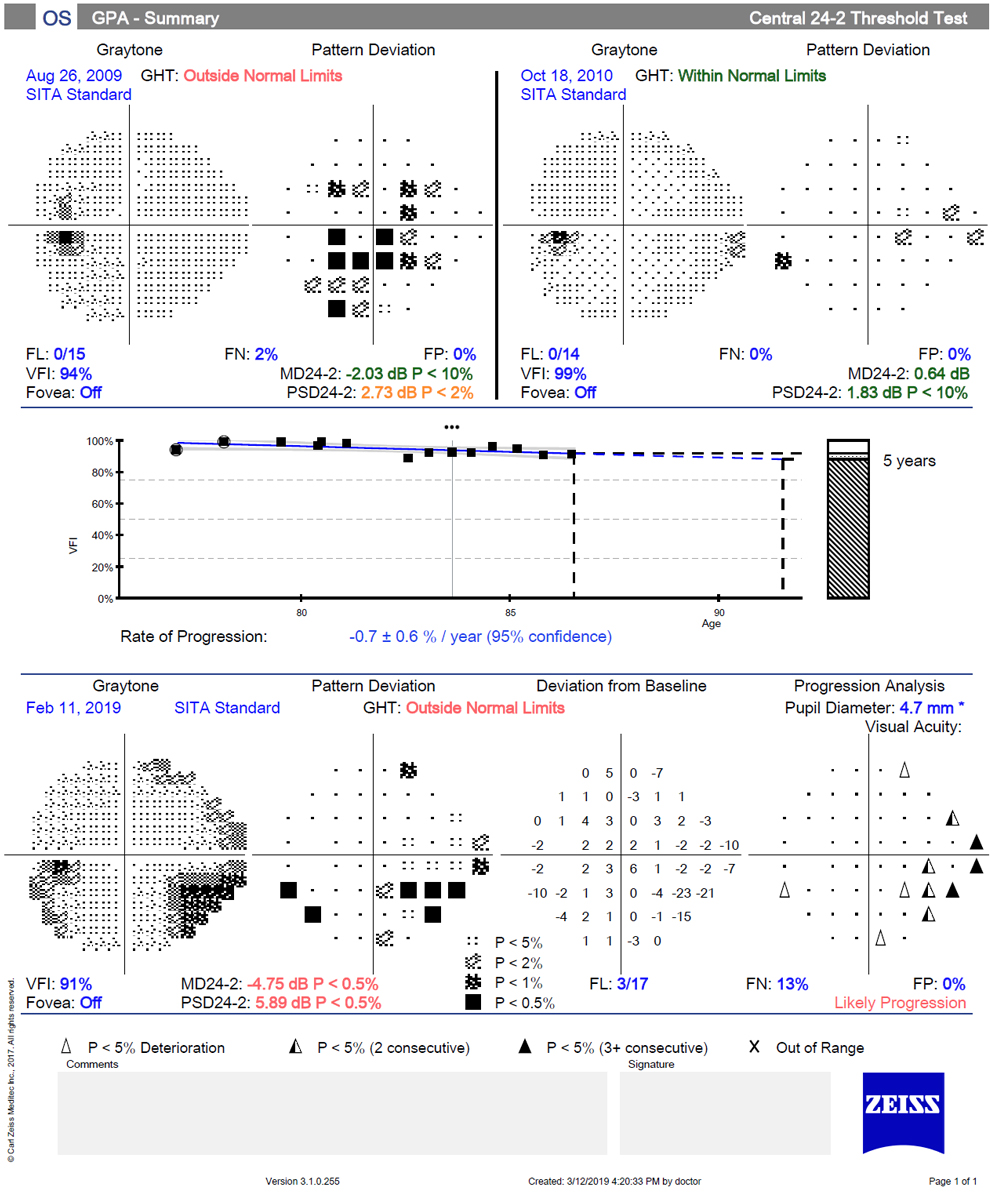 |
| The 24-2C test adds 10 additional test points to the central 10º of the 24-2. However, the SITA Faster strategy allows for very rapid testing; this test was completed in less than two minutes. Photo: Danica Marrelli, OD. Click image to enlarge. |
Recent studies have found that some glaucoma patients often lose central vision during early disease stages. The current standard for measuring visual field loss in these patients is the 24-2 VF test, including central visual field. However, as you know, this test can sometimes miss central visual field defects due to the larger spacing between the test points in the central 10 degree VF area. The 10-2 VF test is effective for mapping central visual defects, but it’s often too time consuming and expensive to administer both tests to patients. The newly developed 24-2C test, however, reduces VF testing by 50% and adds 10 more test points in the central 10 degrees around fixation. It’s still new though, and its clinical relevance hasn’t been determined yet. A study recently published in the Journal of Glaucoma assessed the test.
Researchers compared the HFA 24-2C grid to the conventional HVF 24-2 for macular structure-function relationships. They measured the macular ganglion cell-inner plexiform layer thickness (mGCIPLT) at different parafoveal sectors on SD-OCT in 150 eyes of 150 patients (healthy, preperimetric and perimetric glaucoma suspects) and matched the central visual field mean sensitivity on the decibel and 1/L scales and the parafoveal mGCIPLT topographically in four sectors.
They noted significant global and sectorial correlations between mGCIPLT and central visual field mean sensitivity on both grids. “The structure-function relationship correlations between the average/hemimacular mGCIPLT and the corresponding VF mean sensitivity using a 24-2C grid were however significantly greater in both the entire and perimetric glaucoma groups except for the average mGCIPLT of the perimetric glaucoma group in the 1/L scale. The 24-2C grid showed significantly greater structure-function relationship associations in the superotemporal and inferotemporal parafoveal sectors than the 24-2 VF grid.” Because mGCIPLT and central visual field mean sensitivity were so strongly associated in the 24-2C grid, the researchers concluded that this newer grid may be more advantageous for assessing the macular structure-function relationship.
Hong J, Baek M, Lee J, et al. Comparison of the 24-2 and 24-2C visual field grids in determining the macular structure-function relationship in glaucoma. J Glaucoma. 2021;30(10):887-94. |


